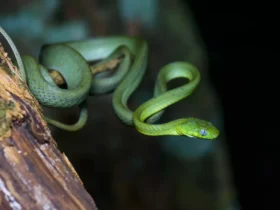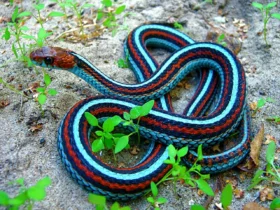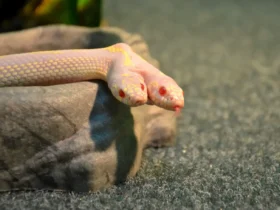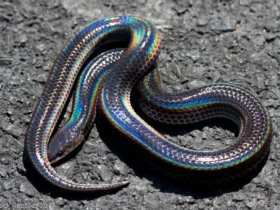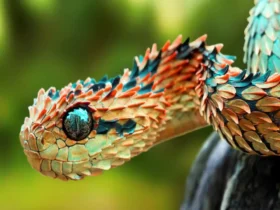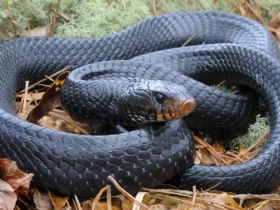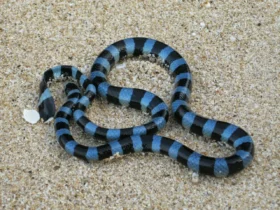Matilda’s Horned Viper (Atheris matildae) is a captivating and elusive snake species that inhabits the remote rainforests of the Usambara Mountains in Tanzania, East Africa. Named after Matilda, the daughter of renowned herpetologist Tim Davenport, this venomous serpent is renowned for its distinctive appearance and intriguing behaviors. In this article, we delve into the fascinating world of Matilda’s Horned Viper, exploring its unique characteristics, habitat, and remarkable adaptations.
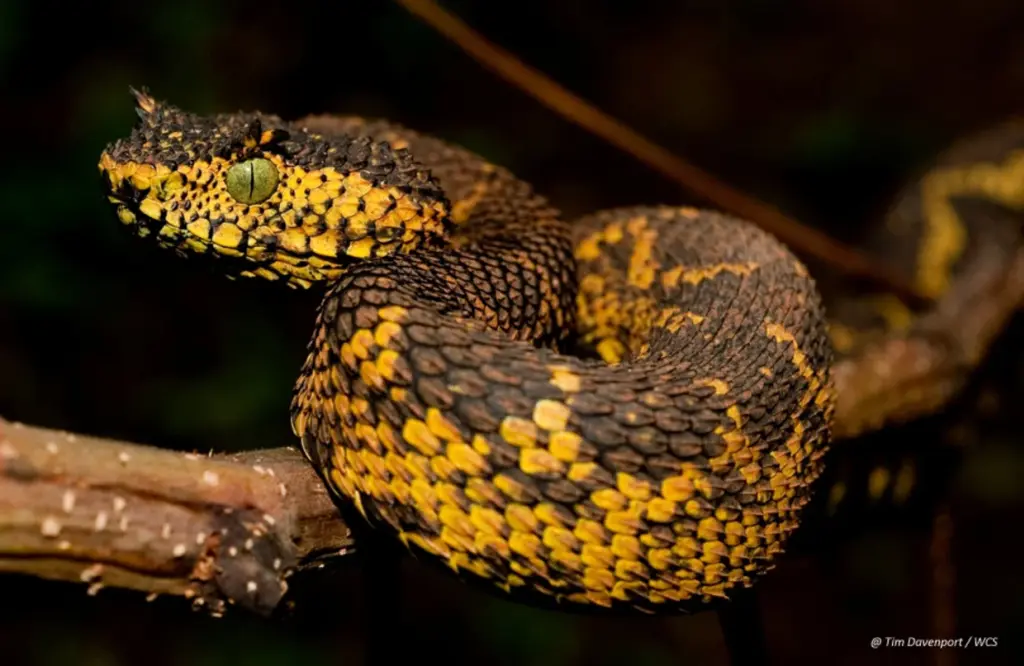
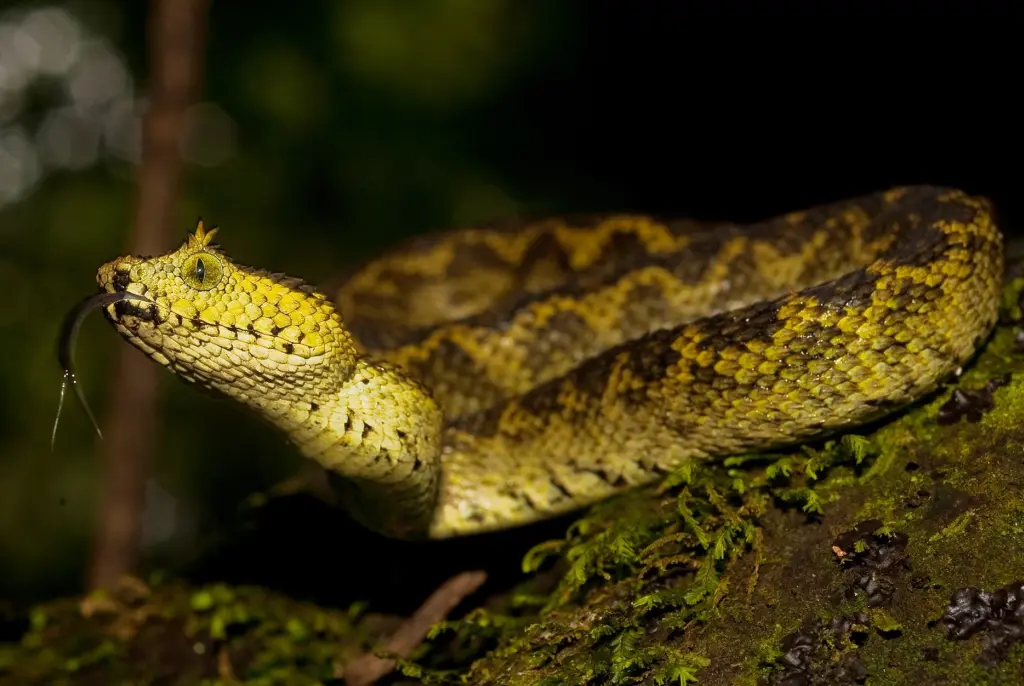
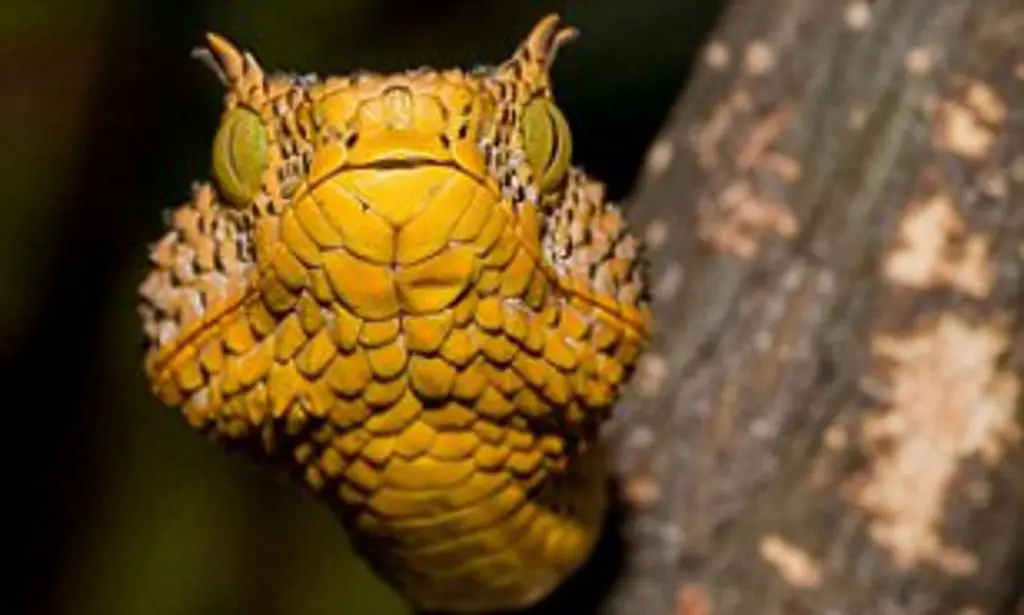
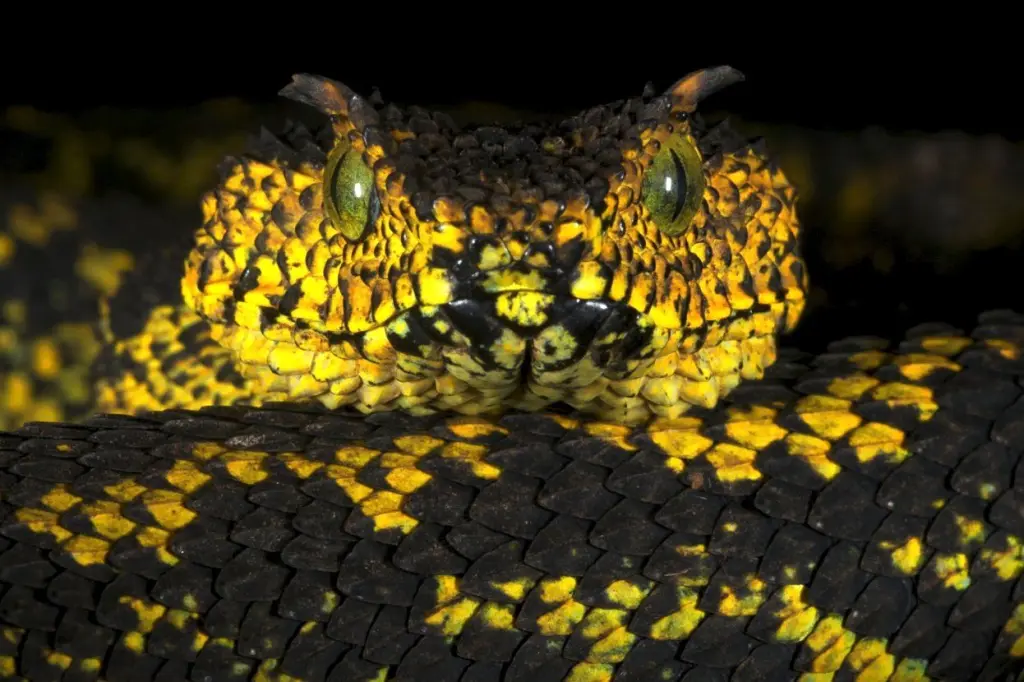
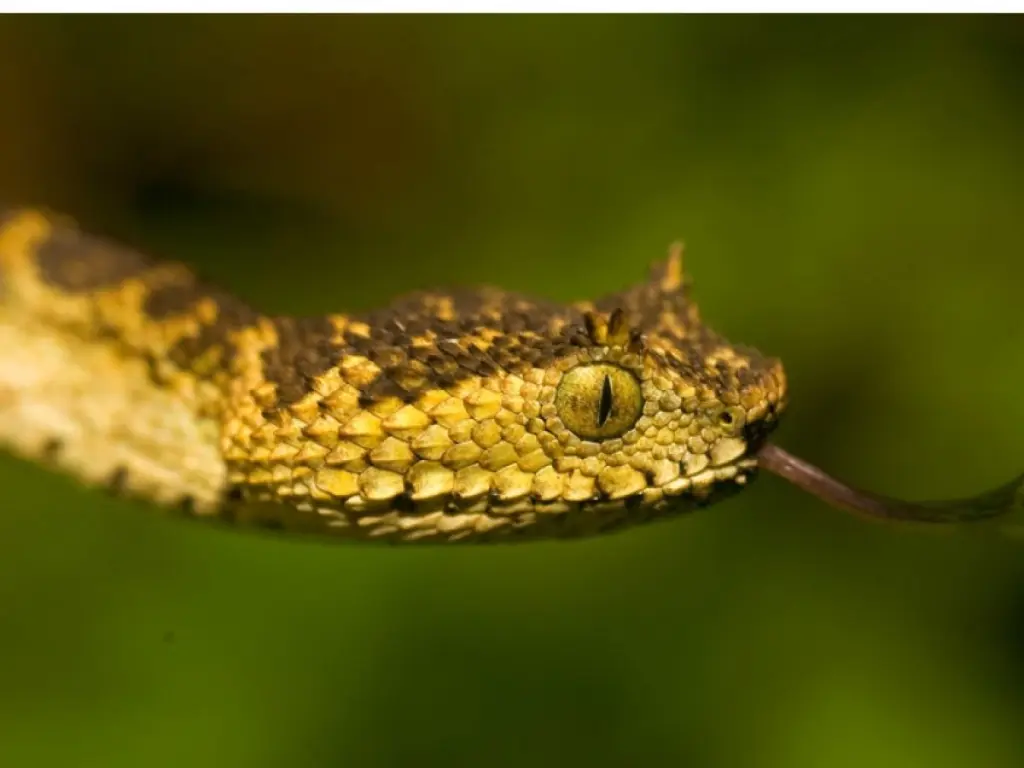
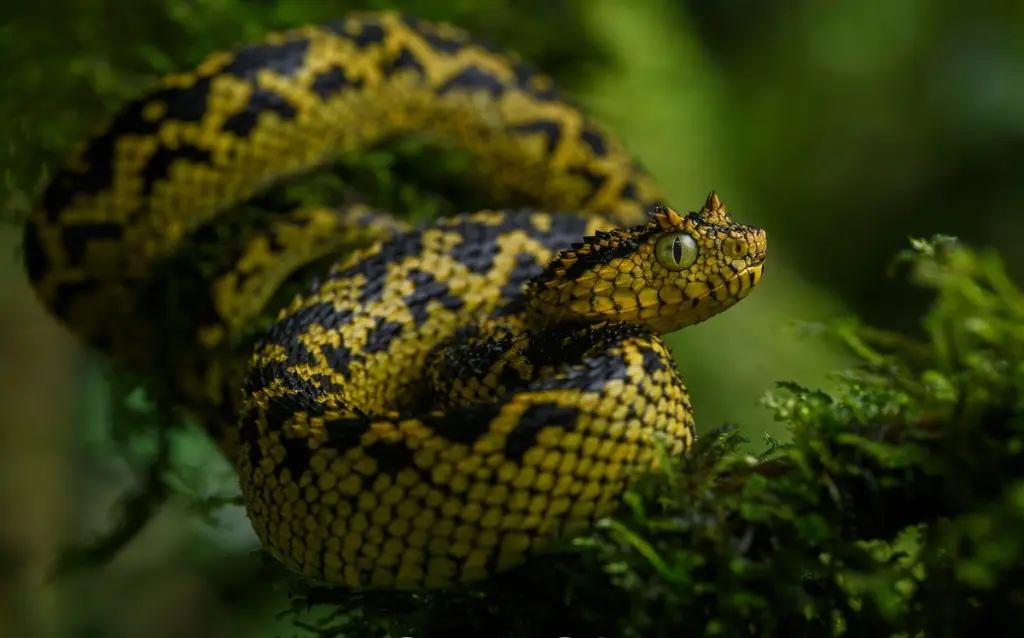
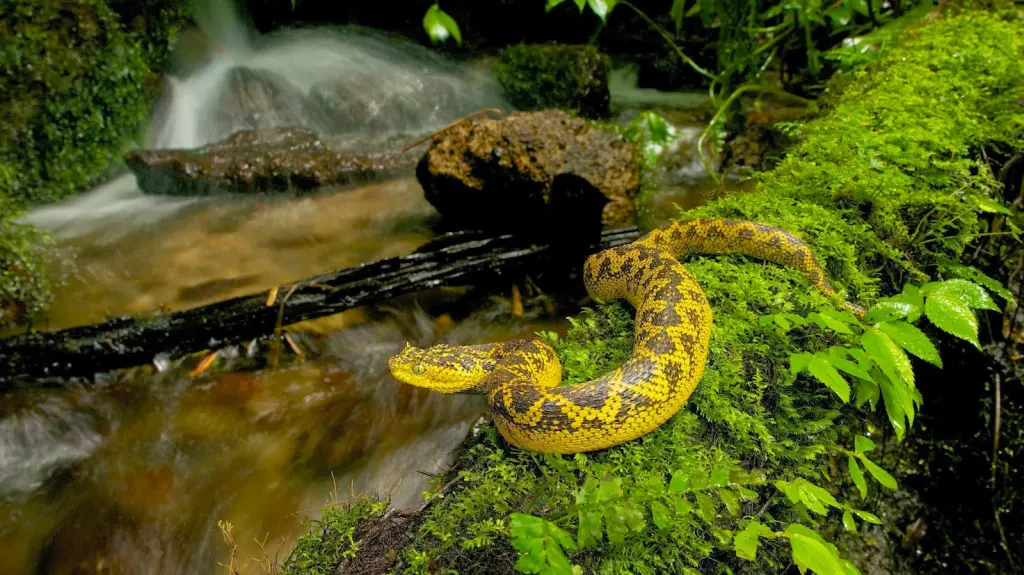
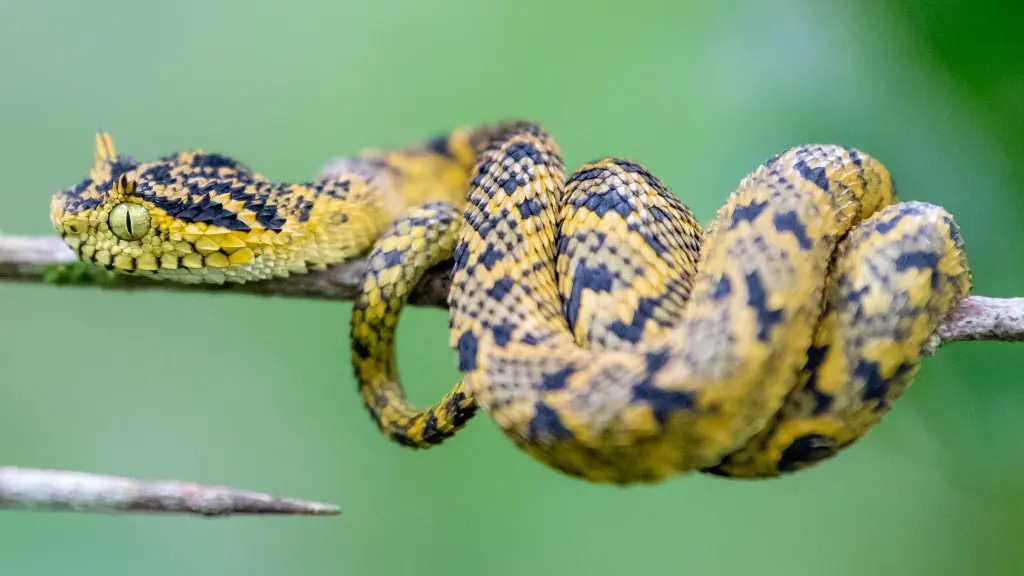
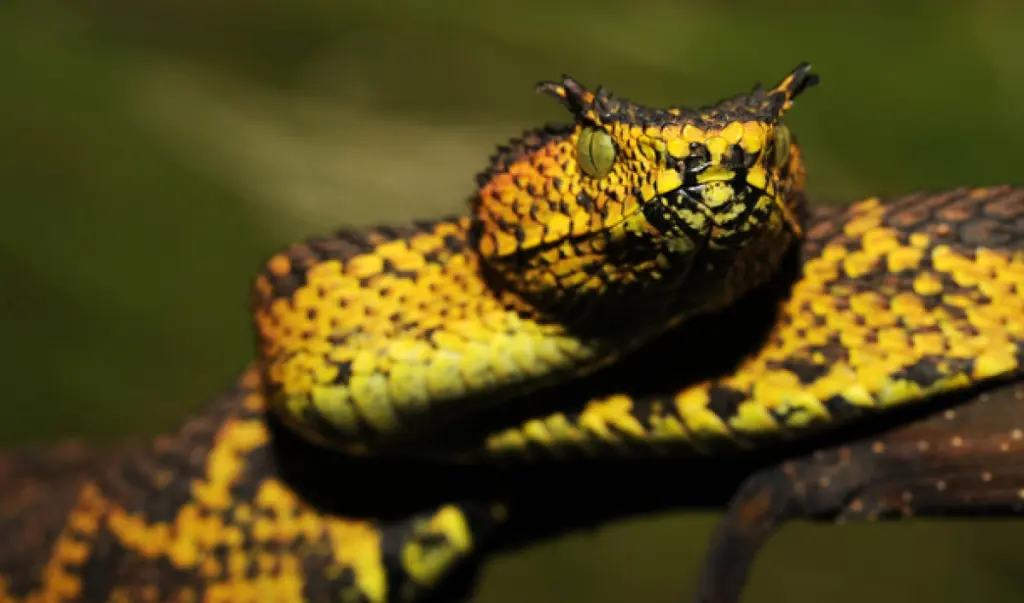
Appearance and Adaptations
Matilda’s Horned Viper is a relatively small species, with adults typically measuring between 30 and 45 centimeters in length. What sets this viper apart from other snakes are its prominent, horn-like scales above each eye, which give it a fearsome appearance. These horns serve as a defense mechanism, helping the snake deter potential predators and blending seamlessly with its natural surroundings. The viper’s coloration varies, ranging from earthy browns to vibrant shades of green, allowing it to camouflage effectively within the lush vegetation of its rainforest habitat.
Habitat and Distribution
Endemic to the montane rainforests of the Usambara Mountains, Matilda’s Horned Viper thrives in a unique ecological niche. This region boasts a temperate climate, characterized by mild temperatures and high humidity, which provides ideal conditions for the viper’s survival. Found at altitudes between 1,200 and 2,000 meters above sea level, these snakes are primarily arboreal, spending a significant portion of their lives in the canopy of trees. Their preference for such habitats allows them to capitalize on the abundant prey and relative safety provided by the dense vegetation.
Feeding Behavior
Matilda’s Horned Viper is an ambush predator, patiently lying in wait for its prey to pass by. Their diet mainly consists of small rodents, birds, and lizards that frequent the rainforest floor or venture into the lower branches of trees. Using a combination of potent venom and lightning-fast strikes, these vipers immobilize their prey, ensuring a successful hunt. The viper’s venom is highly specialized, delivering a toxic cocktail that aids in both capturing prey and defending against potential threats.
Reproduction and Life Cycle
Like other snake species, Matilda’s Horned Vipers are ovoviviparous, meaning the females retain the eggs internally until they hatch, giving birth to live young. After a gestation period of approximately four to six months, the female viper delivers a small litter of around 5-15 offspring. These neonates are independent from birth and must fend for themselves, relying on their inherent camouflage and venomous capabilities to survive in their challenging rainforest environment.
Role in the Ecosystem
Matilda’s Horned Viper plays a crucial role in its ecosystem as both predator and prey. As an apex predator, it helps regulate populations of small mammals and reptiles, contributing to the overall balance of the rainforest. Additionally, the viper’s presence influences the behavior and distribution of its prey species, shaping the intricate web of interactions within the rainforest community.
Final Thought
Matilda’s Horned Viper, with its striking appearance and adaptations, epitomizes the beauty and diversity of the natural world. Its unique characteristics, including the horn-like scales, venomous capabilities, and arboreal lifestyle, make it a captivating subject of study for herpetologists and nature enthusiasts alike. By understanding and appreciating the ecological significance of this species, we can foster a greater understanding and respect for the intricate tapestry of life that exists within the Usambara Mountains of Tanzania.
